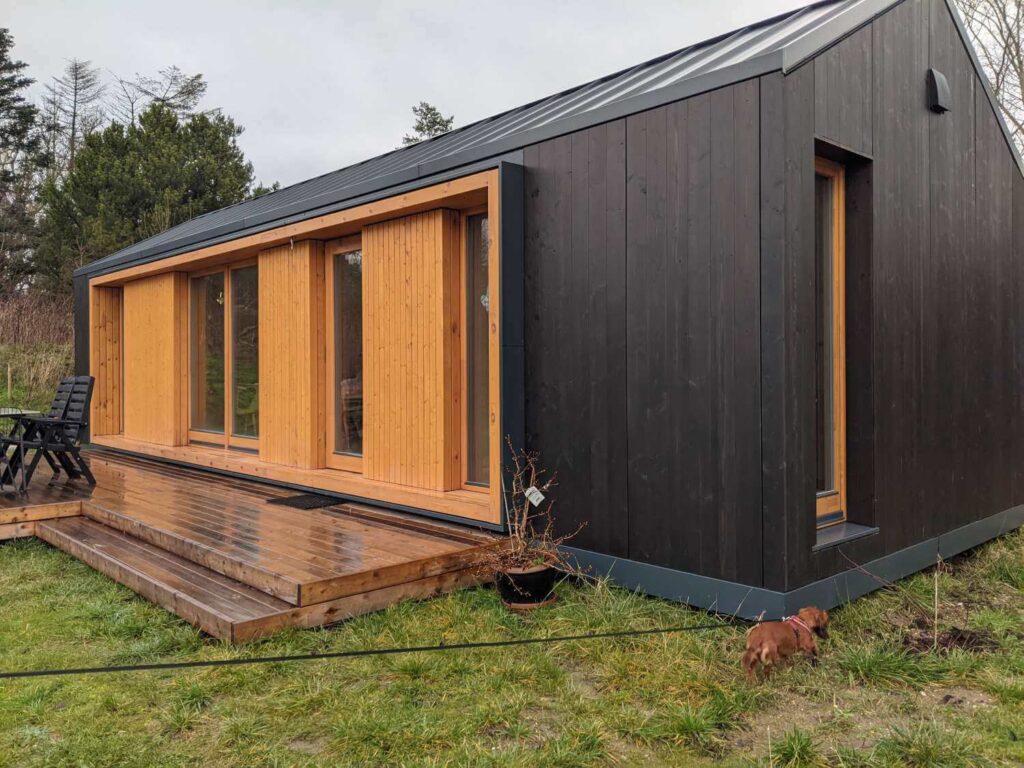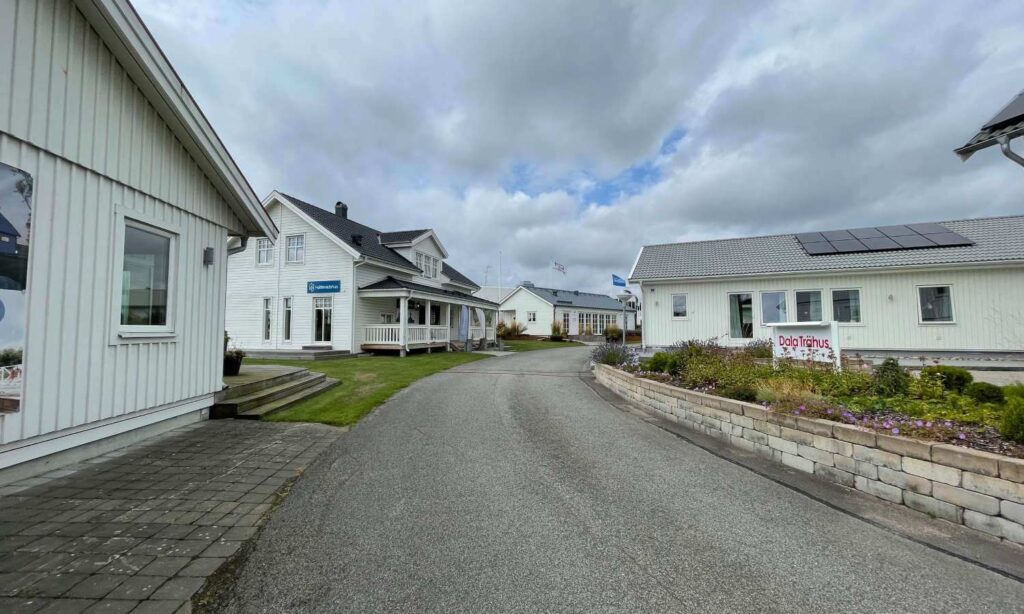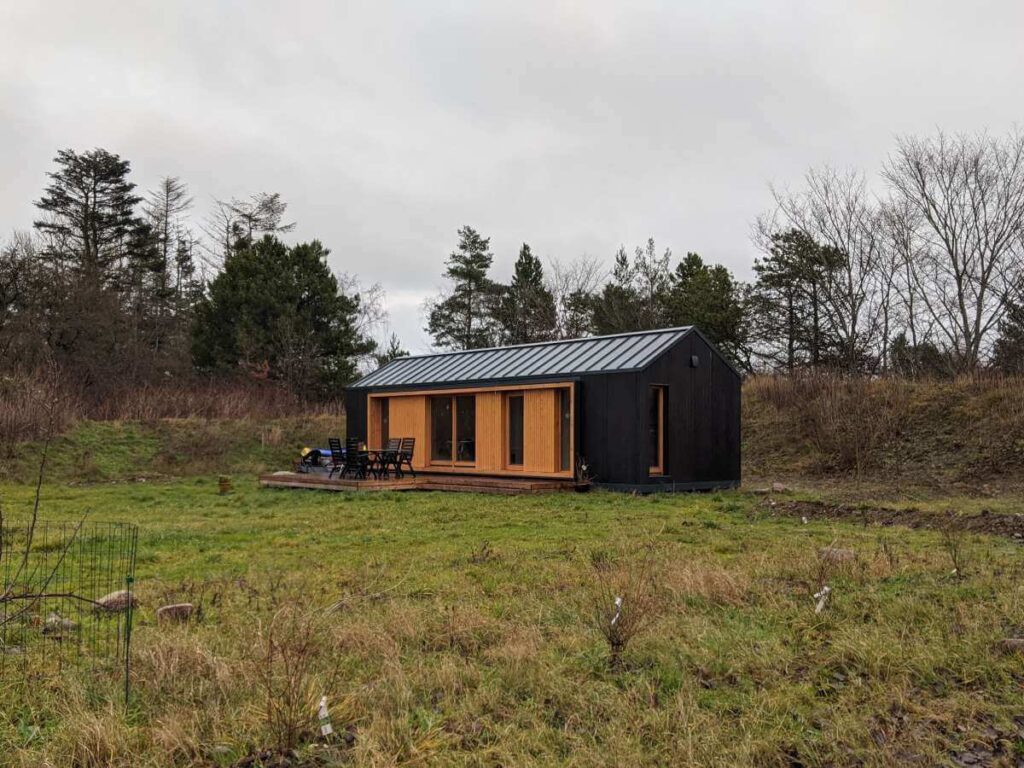Are you in the market for a new home, but feeling overwhelmed by all the different options available? There are three popular choices are prefabricated (prefab) homes, modular homes and build from scratch, but what are the differences between the three?
While they may seem similar, there are some key distinctions that can affect your decision.
In this article I’ll cover the difference between modular, prefab and homes built from scratch. How local building regulations, your taste, gut-feel and budget can have an impact on choosing a supplier.
Starting Small: How a Prefabricated Cabin Sparked a Big Idea
Once you have bought your land in Sweden your mind will quickly turn to building your new home, cosy cabin or summerhouse.
I managed to secure some fairly cheap land and quickly got inspired by the simplicity of prefabricated or modular homes and the various design options. Unlike some countries around the world, prefabricated buildings and modular homes are quite popular options in Sweden and other Northern European countries.
Customisation and Convenience: Comparing Modular, Prefab, and Building from Scratch
You have a few options when embarking on your construction project. Choosing the best route will depend on a few factors. They are on a sliding scale of complexity:
What is a Modular home?
Modular homes are pre assembled rooms that, depending on the final size of your construction, will be delivered in one piece or multiple pieces. They are constructed in a factory, usually made out of timber or other lightweight materials. Delivered to your site on the back of a flatbed truck, lowered into place and then joined together.
The modules are usually completely finished rooms on the inside and outside. Which means flooring, walls, ceilings, kitchens, bathrooms, etc. are finished and ready to go from the day the modules are lowered in place and connected to utilities.
You specify most accessories and customisations with your chosen supplier beforehand having chosen from a catalogue of models. In some cases architectural changes can be made for a cost. Suppliers are even offering a complete solution where the ground would be prepared too.
The factories are often outside of Scandinavia
Most of these suppliers have their factories based in Eastern European countries, or subcontract the work out there too. However more and more are bringing their manufacturing closer to their main market or where their headquarters are located. Something to consider; ensuring quality assurance if the module is made far away from head office and ensuring your building can be delivered due to macro political and economic uncertainty.
Just because modular homes come on the back of a truck does not mean there has to be a sacrifice when it comes to design and quality, with some new suppliers specialising in unique architecture and modern materials which ensure these buildings have longevity.

You can take the modular home with you
There is another interesting angle on the modular home. If you sell the land, get bored and want to move. You can take the home with you. Which is interesting if your goal is to rent, but the location is not working for you.
Preparation
When the module is delivered you need to ensure your land and foundations are ready, and that their flatbed truck can access the site. Their team will be onsite on the day of delivery to ensure it is placed correctly and connected up.
Modular homes can have foundation issues, as most need to be placed on a crawl space foundation, which can have problems with damp and rot if not constructed correctly.
Modular homes can also suffer from perception issues based on the fact that they can be moved around like a caravan. The fact that they are constructed by non-local crafts people also has a disadvantage when engaging with other local tradespeople.
What is a prefab home or kit house?
Prefab homes or sometimes known as kit homes, come in sections smaller than a modular home. They are delivered on a truck which are then assembled on site.
These homes are usually presented in a catalogue of options, with some opportunities for architectural customisation. The firms that you deal with can have nationwide coverage and will not do the final assembly, but will tender the various aspects of construction out to local suppliers, including ground work.
Most suppliers have their factories in the market in which they operate to construct the sections for delivery, and as mentioned above none do the final assembly, but have established relationships with local firms.
These homes have more potential in terms of size, customisation and construction due to the fact they come in smaller sections with fewer logistical issues. They are mainly timber framed, however the limits on design and architectural complexity are not as restricted as modular homes.
Unlike modular homes these buildings are permanent constructions and have more established building standards when it comes to ground work.

Building a summerhouse from Scratch
This is a large topic that almost demands an article itself. Ultimately I ended up choosing to go down this route for a number of reasons, but I’ll start with outlining the basic process here.
Inspiration
The first step to take is getting inspiration. What you like is just as important as what you don’t. Getting it from sources like Instagram or any number of websites makes it easy to document and share. During the process of building it is very easy to get lost and caught up in the default option a builder suggests.
Look around your area, see what fits in, think about the location and the materials that would either blend or tastefully compliment your surroundings. Forming a clear opinion on what type of building you want, the style, the materials, and the interior, will get you the results you want. Not accidentally the results you don’t.
Architect
An architect is not a necessity, but can really raise the quality of your home in terms of layout, style and design. They can also help you overcome the pitfalls of someone new to building and architecture. I spoke to a friend at a practice, the cost of the architect was not the factor, more than my budget would not really allow me to build what I’m sure they’d propose.
Pre made plans
You can also buy pre-made plans from a website. Buying pre-made plans could work if they are suitable and abide by regulations in the country you are building, this is to ensure standards are met and a contractor is happy to work from plans they did not draw.
Drawing yourself
I opted to draw something myself and take that to a contractor I found. I asked the contractor to redraw my plans to ensure cost efficacy. Using standard northern European timber frame cc (centre to centre) sizes wherever possible.
Define the details
I did my best to define as many details as possible. This provided a clear brief and helped with more accurate costs. It can also have drawbacks, with important lessons from centuries of architectural lessons being lost, resulting in silly mistakes. It takes time but be as detailed as possible, listen to their advice, implement feedback, you will save money and potential disappointment at the other side.
Choosing a contractor
Finding a contractor is hard, finding a trusted contractor is harder. I called, I emailed, only a few would express any interest in the job as it was relatively small.
My first attempt to find a contractor was a result of a failed attempt to get some foundation work done on a modular home I was planning to build. When I met this contractor something did not feel right, and that is very much the advice here. Trust your gut.
My second attempt to find a contractor was only as a result of a recommendation I got through a local connection. Things felt right, the communication was clear and speedy.
Hot tips for choosing a contractor
- Look out for signs of disorganisation, visiting the office can say a lot about the organisation of a company, including their social media presence or tardiness when responding to emails.
- If you’re considering one of the Instagrammable prefab homes, check in on social media whether or not people are actually getting them built, and it’s not just demohouses around the world. I consider it a warning sign if I only see demohouses.
- Visiting a finished build and a construction site are a must to get a sense of quality.
- Most businesses have to post profit and loss statements, you can check those out in Sweden on www.allabolag.se or an equivalent.
- Trustpilot.com or self build specific forums like byggahus.se will give you an indication of quality and customer service.
- Ask around local firms to get a feel as most construction companies rely on a network of trades to get the job done.
What factors may influence the choice of construction
Use
If it’s a summerhouse there are usually less stringent building regulations, it may also influence your budget as it is not a primary residence.
Size
If it’s of a certain size sometimes a prefabricated or modular construction might be best.
Location
The natural or built environment that surrounds a building can influence the aesthetics. Yes, it can be nice to blend in, however doing something that respects the environment (planning regulations) yet has a stand out quality can be incredibly effective.
Involvement
How much do you want to manage the details, how much time do you have to drive from and to your plot?
Risk
Building a safe bet in terms of construction style and aesthetics can pay off in terms of resale value. But building something you are happy with has a payback in terms of enjoyment. And if your aim is to rent out when you are not there, it can make it stand out to those who are interested in a unique stay experience.
Why I ended up choosing a local contractor to build the house from scratch
I was about to go down the route of buying a modular home and was looking for a contractor to do the foundation work (Markentreprenör in Swedish). Very few agreed to even meet up, but all of them were unanimous in their recommendation to not build the type of foundation that a modular home would need, kryptgrund (crawl space).
In all honesty my experience with prefab and modular home companies has been terrible. Not all are bad I am sure, but they are salespeople looking to maximise profit with a construction they have no real responsibility for or control over.
I did not have the easiest of journeys with my first choice of local contractor, but my final chosen company seems to be working out very well indeed.

